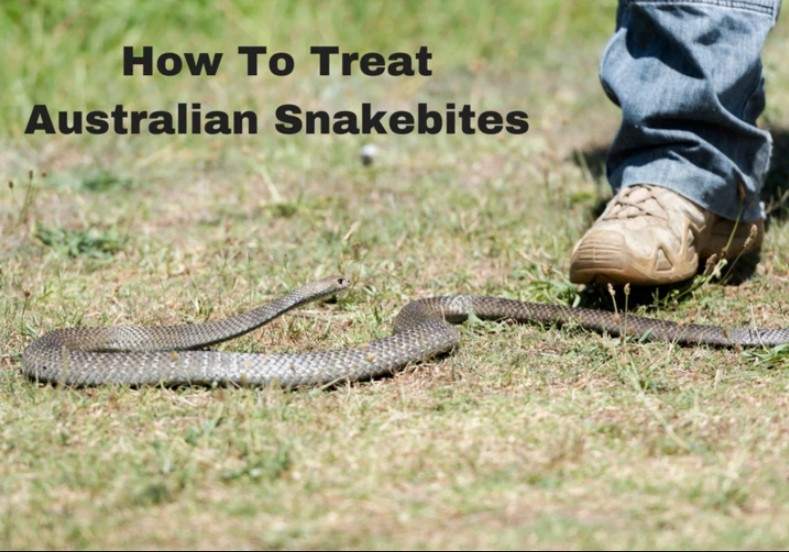INTRODUCTION
Australian snakes are some of the most deadly in the world and as such timely first aid treatment for a snake bite is critical in the outcome of a patient.
Australian snake venoms are complex mixtures of many toxic substances which can cause a range of effects on humans including death. The neurotoxic effect from a venomous bite can quickly kill by causing breathing failure. Other significant effects include bleeding due to your blood being unable to clot and life threatening muscle damage caused by kidney failure.
SNAKE BITE RECOGNITION
Venomous snake bites may be painless and without obvious bite marks. Life threatening effects may appear within minutes in massive envenomation, especially in children. With mild envenomation, life threatening effects may not be seen for hours.
SIGNS & SYMPTOMS
- Paired fang marks, but often only a single mark or scratch mark may be present
- Headache
- Nausea and vomiting
- Abdominal pain
- Blurred/double vision, or drooping eyelids
- Initial collapse or confusion followed by partial or complete recovery
- Difficulty speaking, swallowing or breathing
- Swollen tender glands in the groin or armpit of the bitten limb
- Limb weakness or paralysis
- Respiratory weakness or respiratory arrest.
SNAKE BITE MANAGEMENT
- Commence resuscitation if needed prior to any other treatment.
- Keep the patient at rest, reassured and under constant observation
- Apply Pressure Immobilisation Technique (see below for details)
- Call 000 and request Ambulance for transport to a medical facility
NOTE:
- DO NOT cut or incise the bite
- DO NOT use an arterial tourniquet
- DO NOT wash or suck the bite
- DO NOT kill the snake for identification purposes. This increases the risk of becoming an additional patient and identification of venomous snakes can be made from venom present on clothing or skin using a Venom Detection Kit.
- Antivenom is available for all venomous Australian snake bites.
PRESSURE IMMOBILISATION TECHNIQUE (PIT)
PIT is recommended for the treatment of Australian snake bites. It is also recommended for envenomation from Funnel Web Spider, Blue-ringed Octopus and Cone Shell.
PIT is NOT recommended for the first aid treatment of:
- Other spiders(inc redback)
- Jellyfish stings
- Fish stings (inc Stonefish)
- Scorpions, Centrepedes or Beetles
STEP 1.
Apply bandage over the bite site immediately. Mark the bandage over bite site with a pen.
STEP 2.
Apply the second bandage starting at fingers/toes of bitten limb and extend bandaging upward covering as much limb as possible. The bandage should be applied over existing clothing. Mark the bandage over the bite site with the pen. Mark on the bandage the time of application. Ensure bandage isn’t too tight. Your finger should be able to easily slide between skin and bandage.
STEP 3.
Splint the limb with the triangular bandage to restrict limb movement. A) Apply figure 8 to ankles for leg Immobilisation B) Apply sling to arm for arm bites.
STEP 4.
Keep the patient and limb completely still. Bring transport to the patient if possible.
NOTE.
If the bite is not on a limb, firm direct pressure on the bite site may be useful. Do not restrict breathing or chest movement. Do not apply firm pressure to the neck.
To purchase TacMed’s Snakebite Treatment Kit visit HERE.
References
http://www.anaesthesia.med.usyd.edu.au/resources/venom/snakebite.html
http://onlinelibrary.wiley.com/doi/10.1111/imj.13297/epdf
